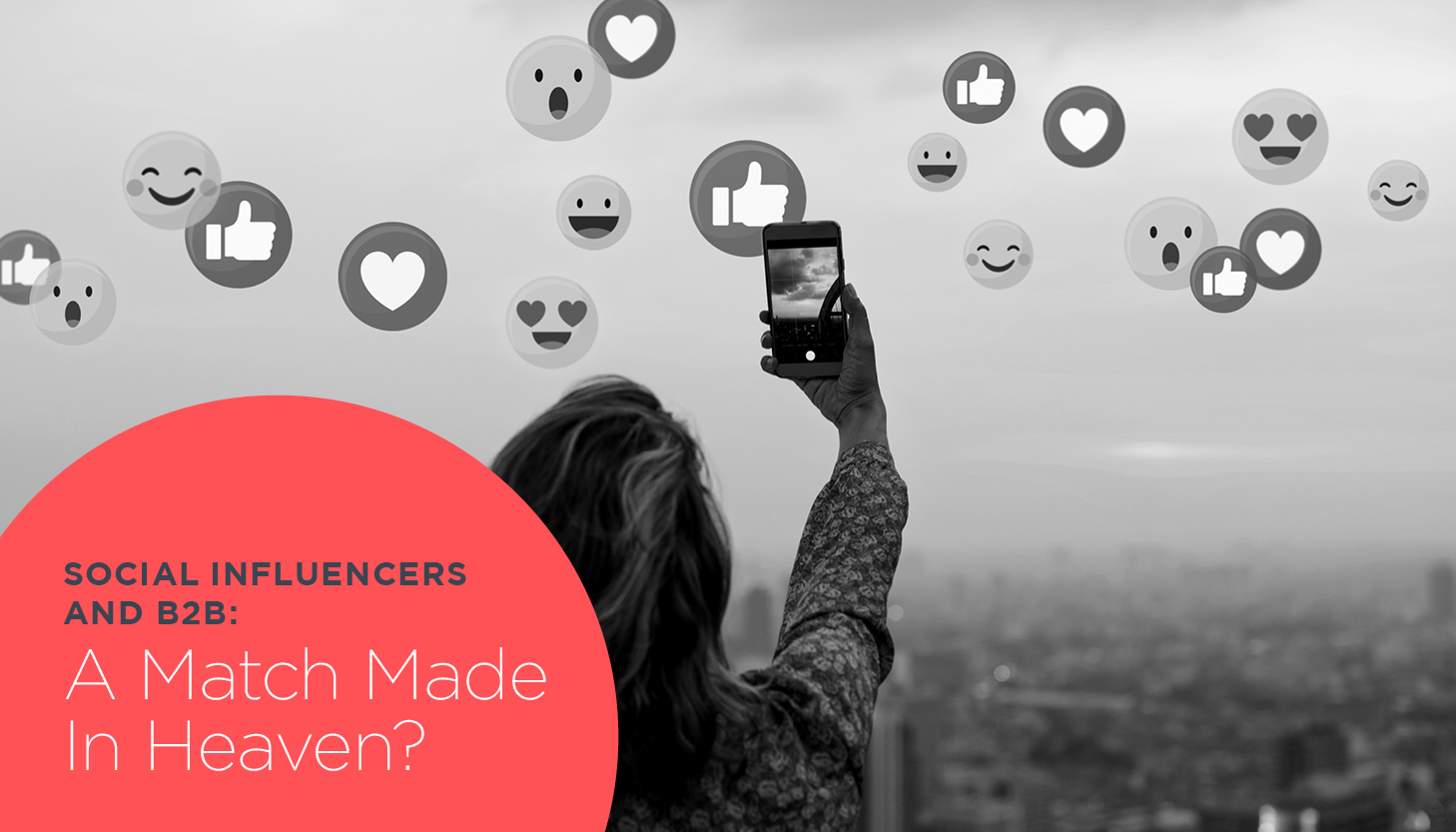Influencers are no longer relegated to the realms of B2C and NFP. Here’s what you need to know.
Any marketer worth their salt can tell you: It doesn’t matter how good your product or service is if people don’t know about it. Your killer creative team might be putting together evocative, impactful artwork, but the success of your campaign still relies on getting it in front of (enough of) the right people.
The explosive rise of social media and the historically loose regulations around advertisements has seen many B2C companies leverage social influencers’ already captivated audiences. After all, consumers are more open to ‘recommendations’ than to sales. While influencer marketing for B2B hasn’t been adopted as quickly, it’s definitely on the rise.
People buy from people, even when it comes to B2B.
What are social influencers?
For B2C, social influencers are usually Instagrammers, YouTubers, and Bloggers. Depending on your industry, appropriate B2B influencers could also be industry executives, market analysts, thought leaders or experts, and journalists.
Macro vs Micro-Influencers
Just like with other kinds of marketing, you have to consider the size of an audience vs how engaged they are. A celebrity with millions of followers on social media might get your business in front of a lot of eyes, but you might get better results with a niche influencer with a few thousand - highly engaged - followers.
Will influencer marketing replace other marketing?
Influencer marking can be extremely effective for increasing your brand authority and reaching new audiences. It’s not likely to replace traditional marketing methods any time soon though. It’s best to simply consider influencer marketing as another component of your content marketing channel strategy.
Are they effective?
Using an influencer get your product in front of a whole new audience. That audience is also already warmed up and receptive to what that particular influencer wants to talk about. They’re following and engaging with them willingly, in their free time, because they value that influencer's opinions. It’s also a highly effective form of social proof.
Wait...is there a difference between social influencer marketing and advocacy?
There is a difference, though it’s subtle.
Outwardly, they might appear similar (people talking about how great you are). They also might fulfil the same functions (spreading the good word and recommending your business).
The difference is how you got there. Influencer marketing is, as the name implies, part of your marketing strategy. It’s usually paid (in cash or in-kind) and works best when it comes from thought leaders. It’s researched and strategic, should be incorporated into your marketing budget, and comes with a tangible ROI.
Advocacy, on the other hand, is when regular people who happen to love your brand help promote it. Advocates can be anyone from satisfied customers to happy employees: anyone who likes you and believes in what you’re doing enough to talk about it - without explicit incentive from you. Building brand loyalty and encouraging advocacy is an important goal to keep in mind when working on your branding and marketing, but it’s not quite the same as influencer marketing.
Things to watch out for
If you’ve decided to incorporate influencer marketing into your strategy, here are some key points to make note of when considering an influencer:
- Social channels
- Non-social channels. (Books, podcasts, radio)
- Engagement rates
- Topics normally addressed
- Prior industry relationships
- Relevance to your target audience
- Any red flags or negative media coverage
As a final note, people who are influential in your B2B sphere may have gotten there due to industry experience and employment. Make sure you carefully consider any potential conflicts of interest before you engage with the influencer.

